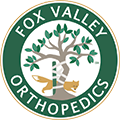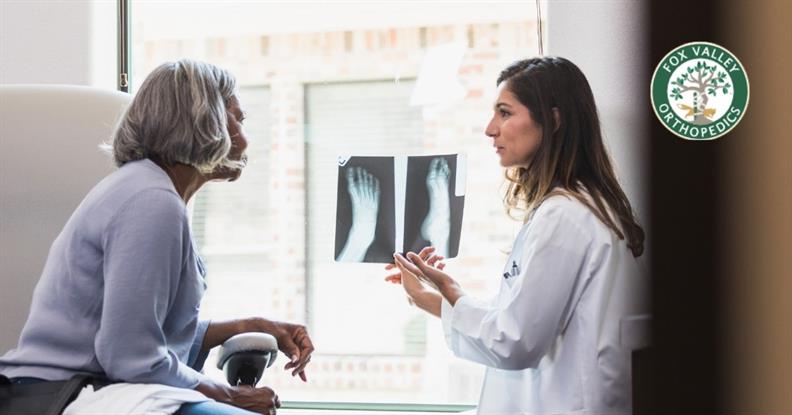Osteoarthritis Solutions: Navigating Treatment Options
- Category: Osteoarthritis
- Posted On:
- Written By: Fox Valley Orthopedics
.jpg)
Living with Joint Pain? You're Not Alone
Imagine waking up in the morning and feeling stiffness in your knees or hands that takes its time to fade away. Some days, even simple tasks like climbing stairs or opening a jar feel like a challenge. For many, these are everyday realities tied to one of the most common joint conditions that quietly progresses over time.
What Is Osteoarthritis?
Osteoarthritis happens when the cartilage cushioning your joints starts to wear down. This cartilage is like the natural shock absorber for your knees, hips, and other joints. Without it, bones rub together, causing pain, swelling, and stiffness. The process may start slowly, perhaps with a little discomfort after exercise, but over time, symptoms become more frequent and harder to ignore.
There’s no single reason why it develops. It could result from repetitive stress on the joints, a past injury, or even your family’s health history. Diagnosing it usually involves discussing your symptoms, examining your movement, and, in some cases, checking for joint damage through imaging. Recognizing it early matters because timely management can limit further damage.
Who’s More at Risk?
Osteoarthritis doesn’t discriminate, but certain factors make some people more prone to it. Age is a big one because the wear and tear on your joints naturally adds up over the years. But it’s not just about getting older. Carrying extra weight puts added pressure on your knees and hips, speeding up joint degeneration.
If osteoarthritis runs in your family, you may be more likely to develop it yourself. Sports injuries or heavy lifting jobs may also increase your risk. Understanding these factors can make all the difference in taking preventive steps to protect your joints.
Tackling Symptoms Without Surgery
Medications and Diet Support
Medications are often the go-to for managing osteoarthritis pain. Many people start with over-the-counter options like NSAIDs or acetaminophen to relieve inflammation and discomfort. For those who need something stronger, prescription alternatives may offer relief with fewer side effects.
Supplements, including glucosamine and chondroitin, are widely used, although their effectiveness varies. Vitamins like D and C might also play supportive roles in joint health. Taking care of your body often starts with what you put into it, so healthy nutrition becomes a vital part of managing this condition.
The Role of Physical Therapy
Working with a physical therapist can make all the difference. Targeted exercises aim to strengthen the muscles supporting your joints, while improving flexibility and reducing pain. Even small improvements in muscle strength can help you move more comfortably.
Occupational therapists also step in to modify your daily routines or suggest tools that reduce strain on your joints. Whether it’s an ergonomic chair, a cane, or different ways to approach common tasks, these personalized strategies can greatly enhance life with osteoarthritis.
Lifestyle Tweaks
Sometimes small adjustments yield the biggest benefits. Weight management stands at the top of the list, as even modest weight loss reduces joint strain dramatically. Regular, low-impact exercises like swimming or yoga keep joints moving without adding stress.
Alternative remedies such as heating pads, cold packs, or even massages provide an extra layer of comfort on tough days. Staying active within your limits and balancing rest with movement can go a long way in managing symptoms.
Advanced Non-Surgical Options
Injection Therapies
For individuals who don’t find relief from medications or therapy alone, injections might help. Corticosteroid injections target inflammation and can offer immediate, though temporary, relief. Alternatively, hyaluronic acid injections act as lubricants for the joint, easing movement and discomfort.
These treatments aren’t a cure, but they often extend the time before more invasive options like surgery become necessary.
Innovative Regenerative Medicine
Regenerative therapies like platelet-rich plasma (PRP) or stem cell treatments are gaining traction in treating osteoarthritis. PRP focuses on using your body’s natural growth factors to promote repair. Meanwhile, stem cell therapies aim to regenerate damaged tissue, though they’re still being researched for long-term results.
While the science continues to evolve, these options offer hope for managing osteoarthritis in more natural and targeted ways.
Support Through Devices
Braces, orthotics, or canes are invaluable for reducing pain and improving mobility. A well-fitted brace stabilizes a joint, helping to prevent stress and reduce discomfort. Orthotics, like shoe inserts, distribute weight evenly to lessen pressure on joints.
These devices serve as helpful companions in keeping you active and independent while dealing with ongoing symptoms.
When Surgery Becomes the Next Step
Exploring Surgical Outcomes
Sometimes, osteoarthritis progresses to a stage where non-surgical options just aren’t enough. Surgery then becomes the next frontier. Procedures like arthroscopy or joint realignment help address specific problem areas while preserving as much of the joint as possible.
Osteotomy, for example, shifts weight away from damaged areas, prolonging the life of the joint. It’s an excellent option for younger individuals looking to stay active without jumping straight to joint replacement.
Joint Replacement as a Final Option
For advanced osteoarthritis, partial or total joint replacements offer a durable solution. Modern implants restore mobility and relieve pain for many years. Tailored post-operative care ensures you get the best results from your new joint.
A Team Approach to Your Joint Health
Managing osteoarthritis doesn’t have to mean giving up the activities you love. Patient-centered care involves building a comprehensive plan that suits your specific needs, whether focused on medication, therapy, or advanced procedures.
At Fox Valley Orthopedics, we’re here to walk that path with you. Offering both non-surgical and surgical solutions, our team designs personalized approaches to help you move with confidence again. Relief and mobility could be just a phone call away.
Don’t wait for joint pain to slow you down; call (630) 584-1400 today and start your customized care plan.



